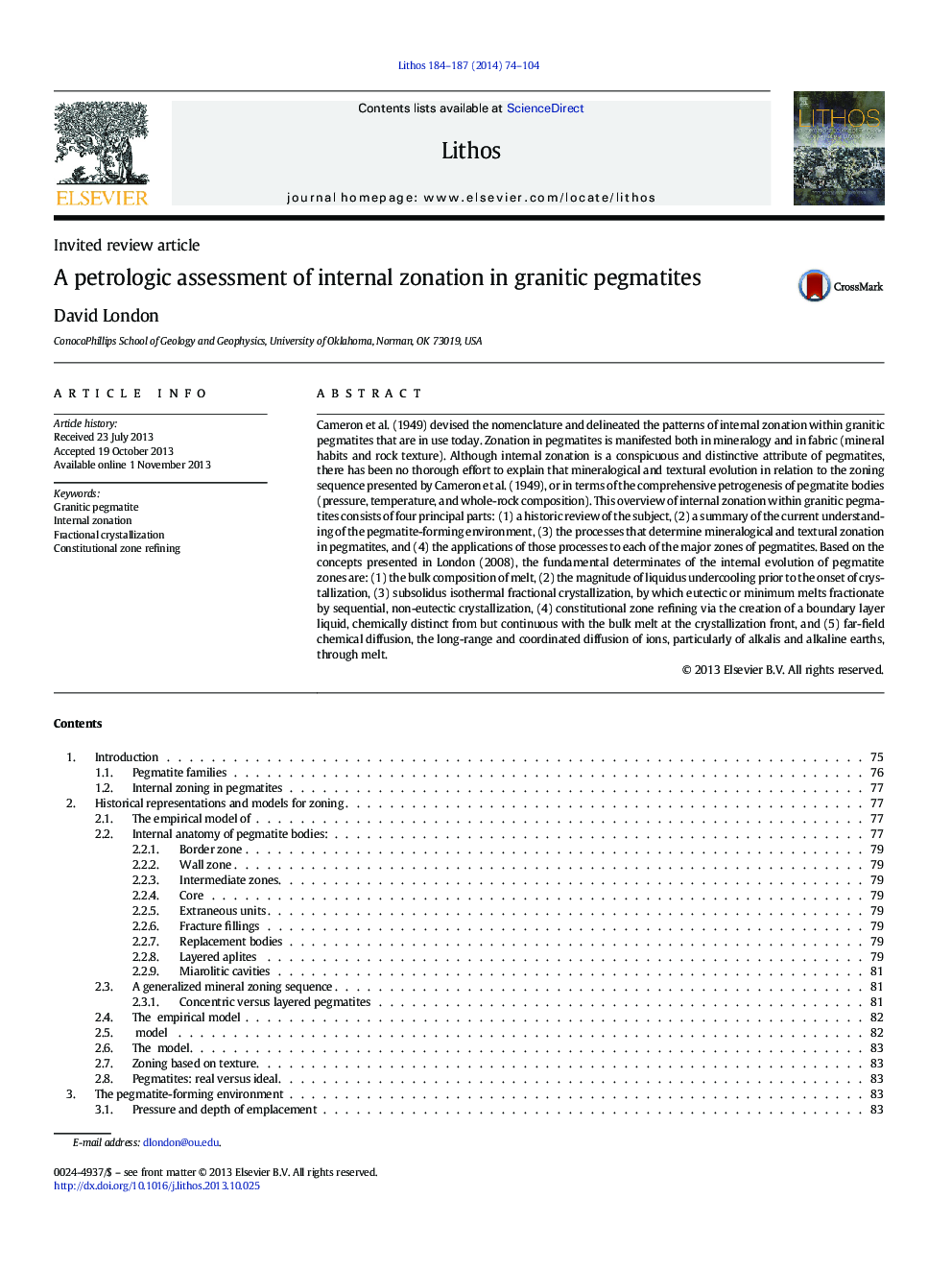| Article ID | Journal | Published Year | Pages | File Type |
|---|---|---|---|---|
| 4716117 | Lithos | 2014 | 31 Pages |
•The bulk composition of pegmatite-forming melts•The magnitude of liquidus undercooling prior to the onset of crystallization•Subsolidus isothermal fractional crystallization of eutectic or minimum melts•Constitutional zone refining via the creation of a boundary layer liquid at the crystallization front•Far-field chemical diffusion, the long-range and coordinated diffusion of ions through melt
Cameron et al. (1949) devised the nomenclature and delineated the patterns of internal zonation within granitic pegmatites that are in use today. Zonation in pegmatites is manifested both in mineralogy and in fabric (mineral habits and rock texture). Although internal zonation is a conspicuous and distinctive attribute of pegmatites, there has been no thorough effort to explain that mineralogical and textural evolution in relation to the zoning sequence presented by Cameron et al. (1949), or in terms of the comprehensive petrogenesis of pegmatite bodies (pressure, temperature, and whole-rock composition). This overview of internal zonation within granitic pegmatites consists of four principal parts: (1) a historic review of the subject, (2) a summary of the current understanding of the pegmatite-forming environment, (3) the processes that determine mineralogical and textural zonation in pegmatites, and (4) the applications of those processes to each of the major zones of pegmatites. Based on the concepts presented in London (2008), the fundamental determinates of the internal evolution of pegmatite zones are: (1) the bulk composition of melt, (2) the magnitude of liquidus undercooling prior to the onset of crystallization, (3) subsolidus isothermal fractional crystallization, by which eutectic or minimum melts fractionate by sequential, non-eutectic crystallization, (4) constitutional zone refining via the creation of a boundary layer liquid, chemically distinct from but continuous with the bulk melt at the crystallization front, and (5) far-field chemical diffusion, the long-range and coordinated diffusion of ions, particularly of alkalis and alkaline earths, through melt.
